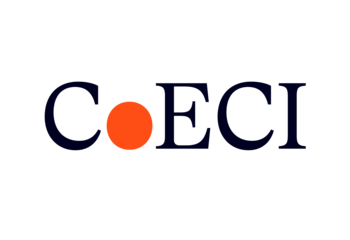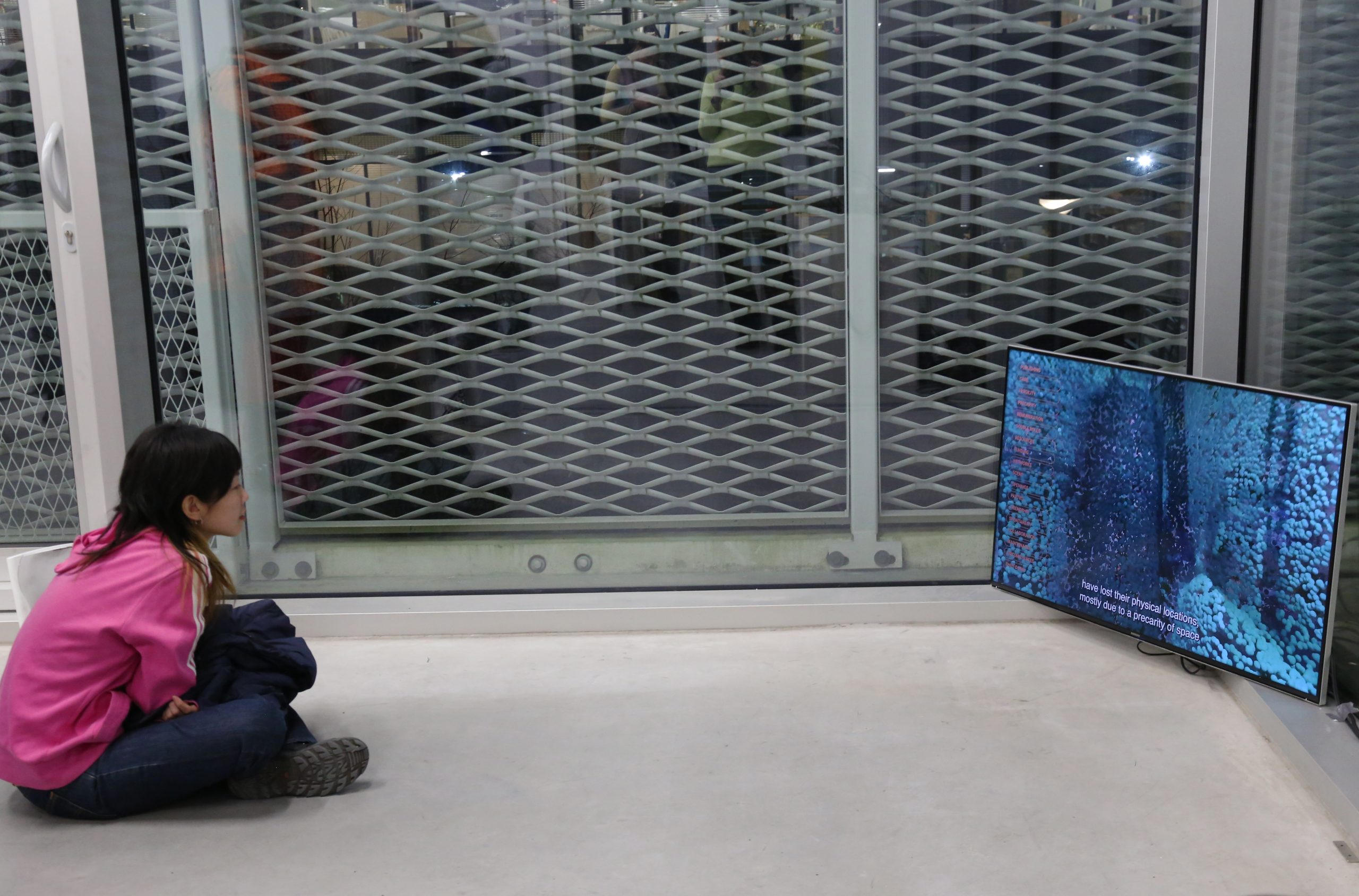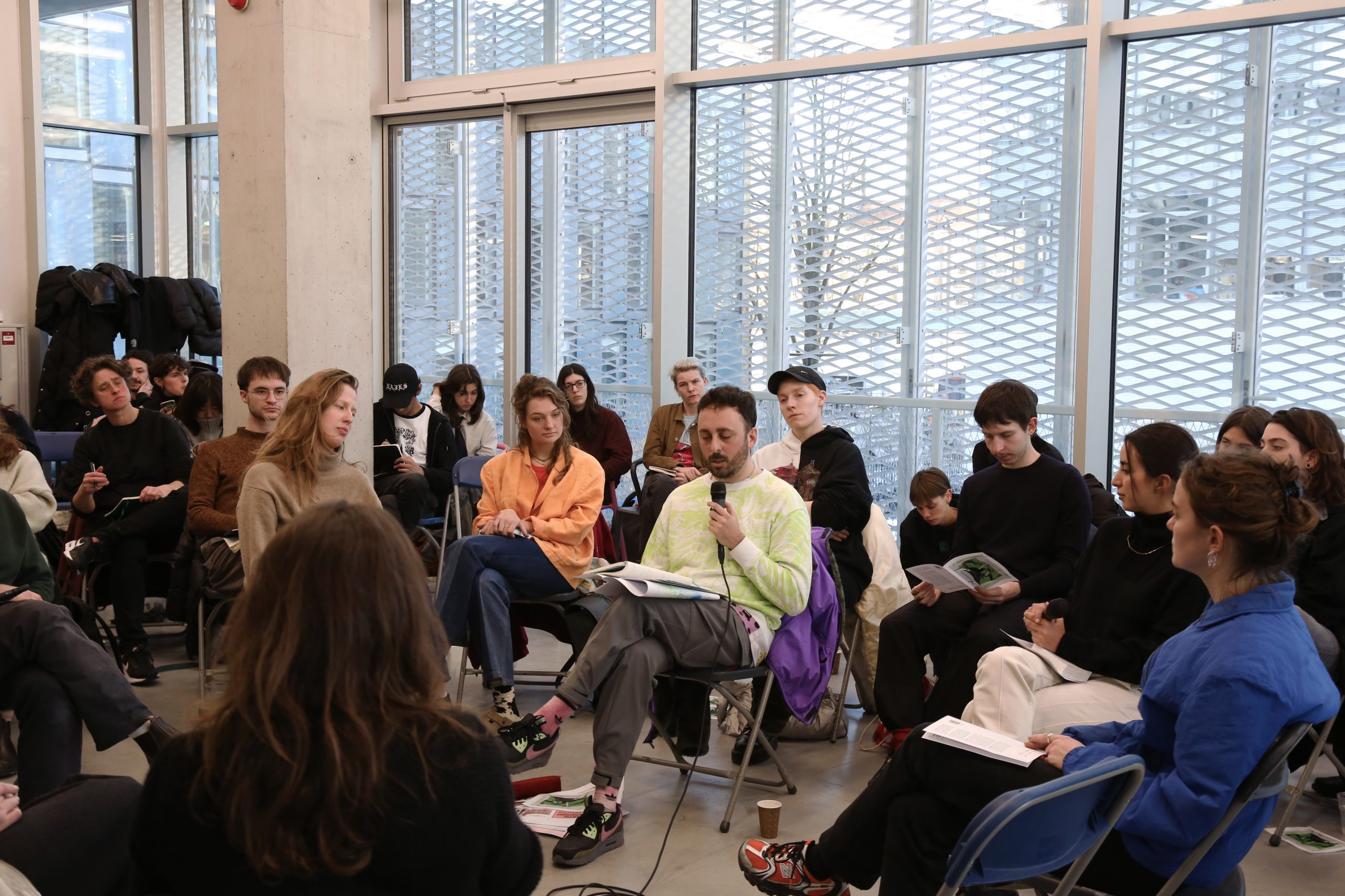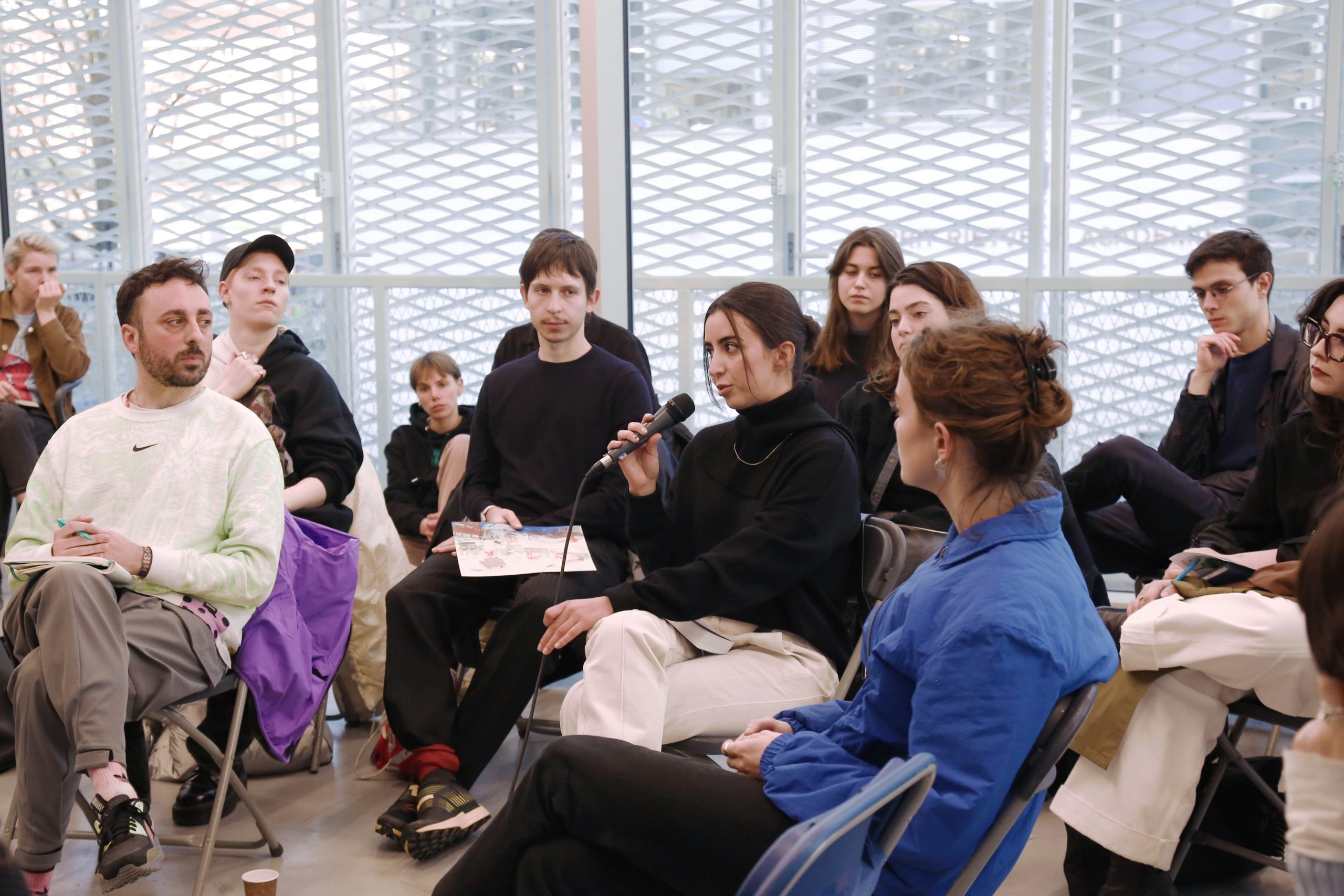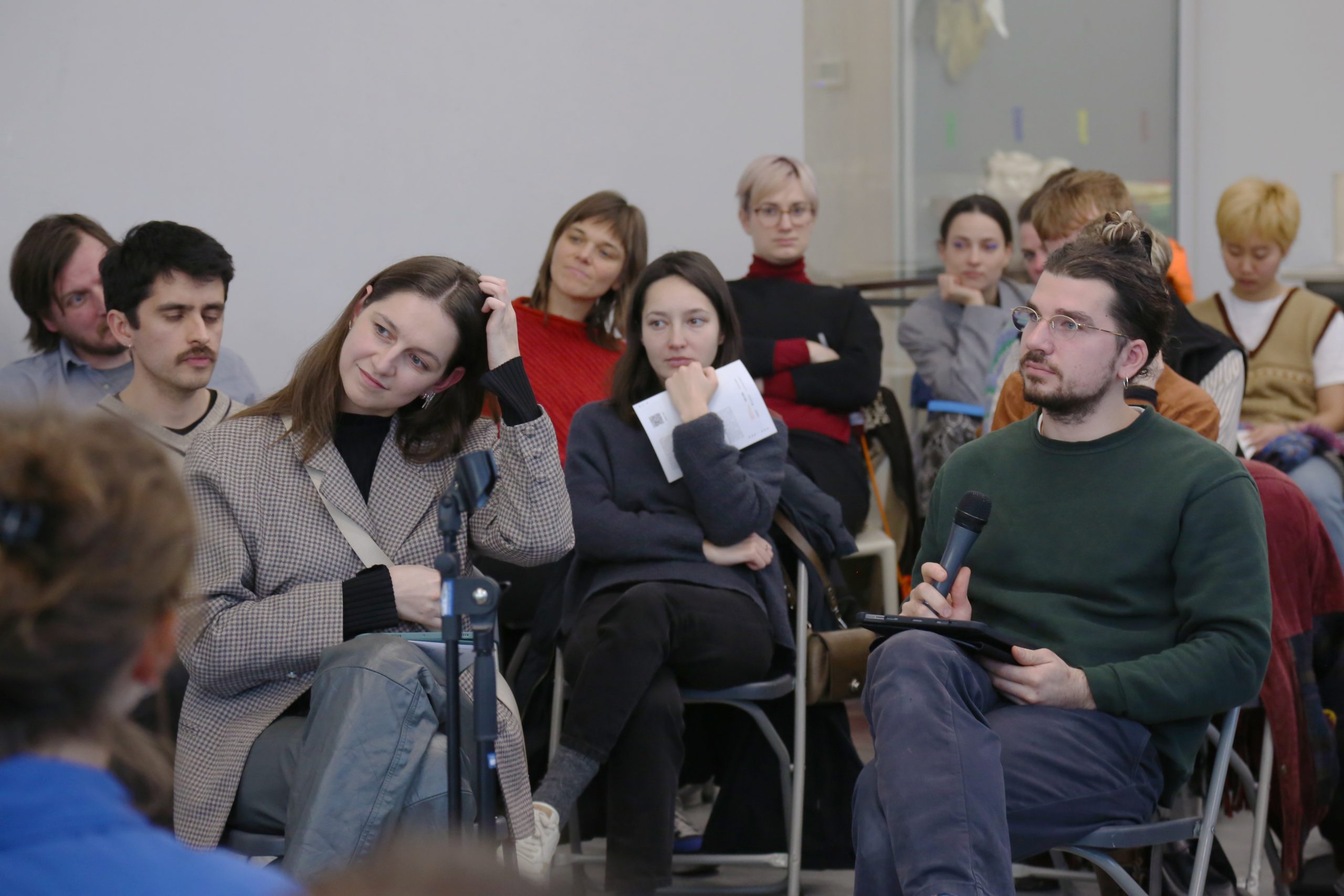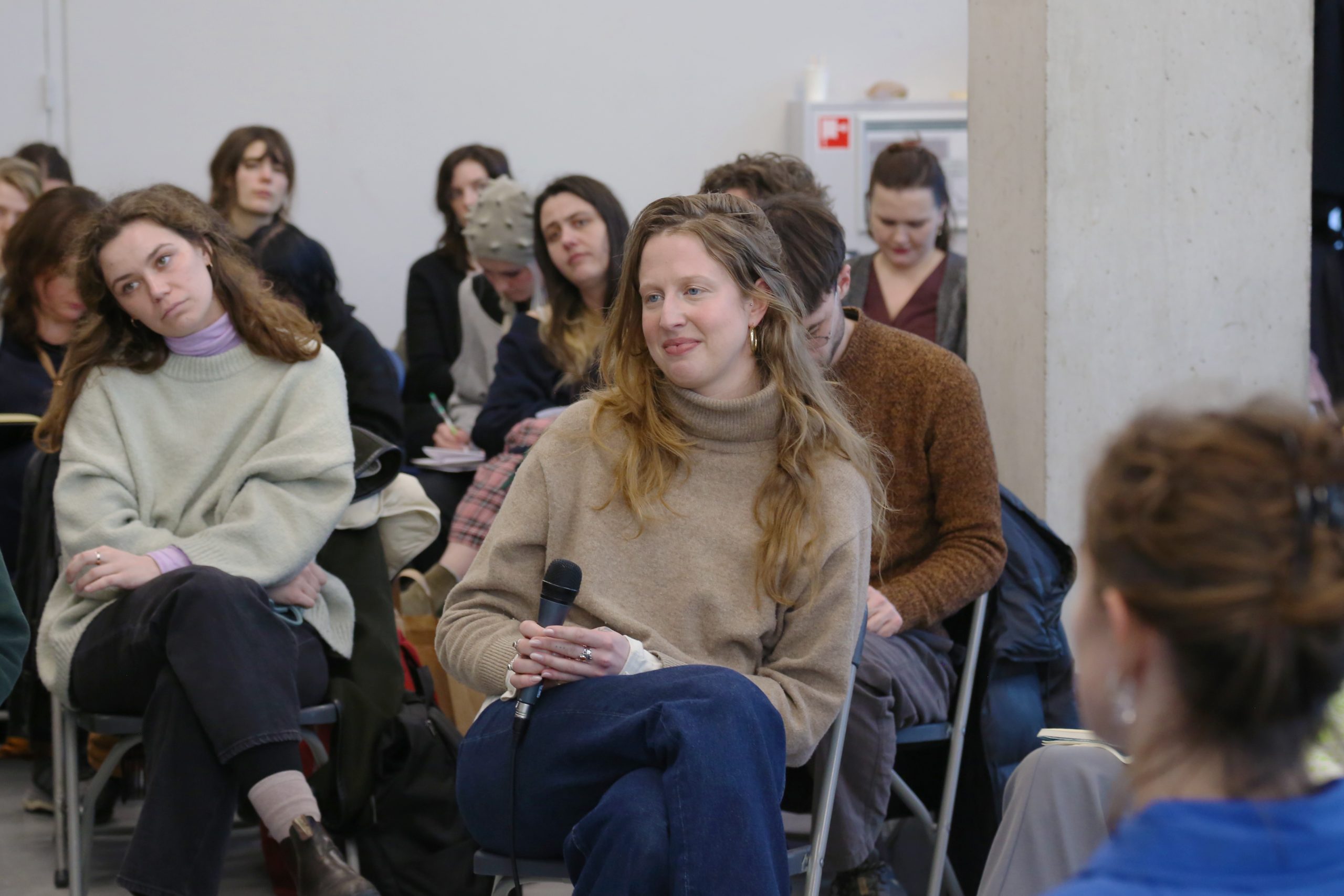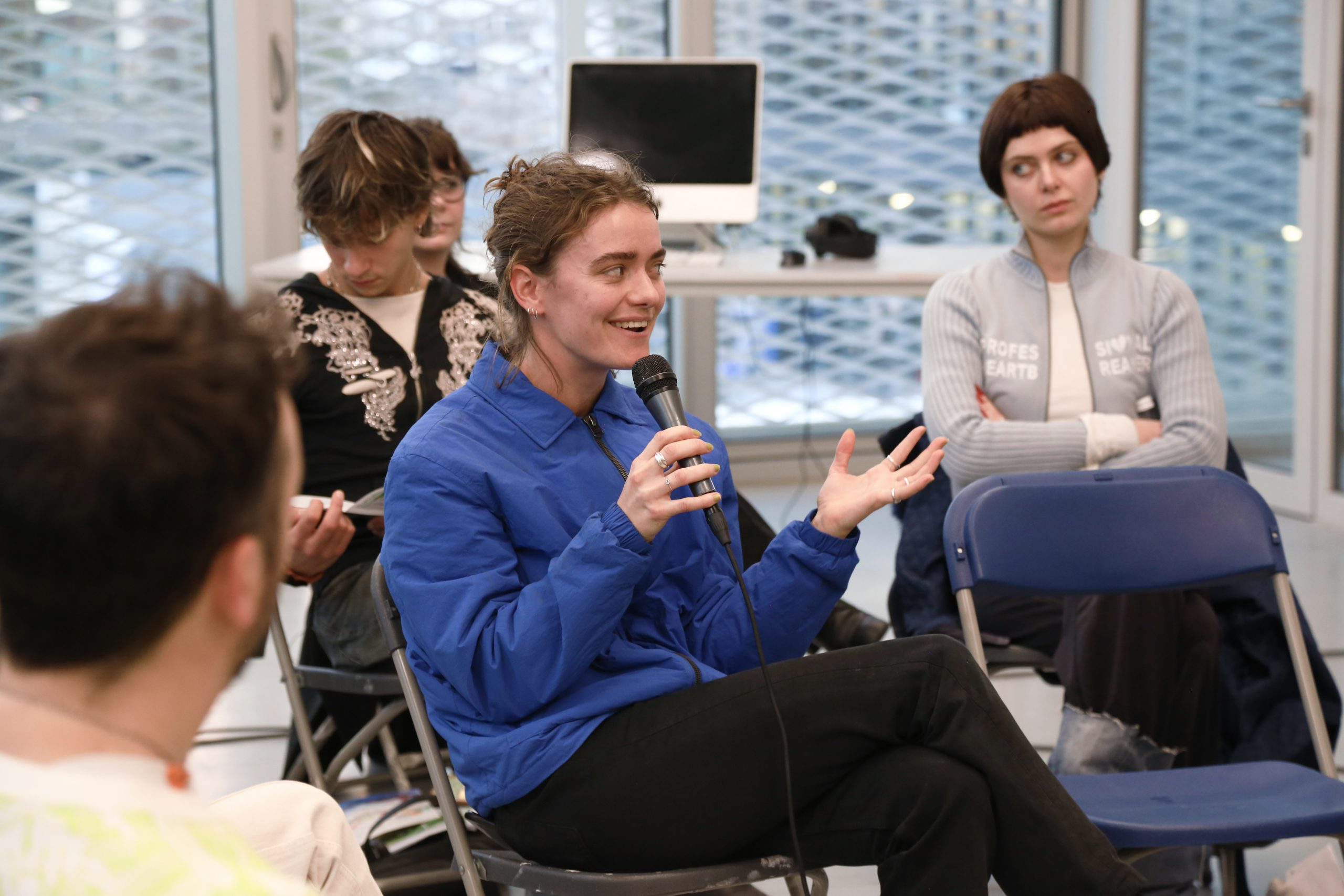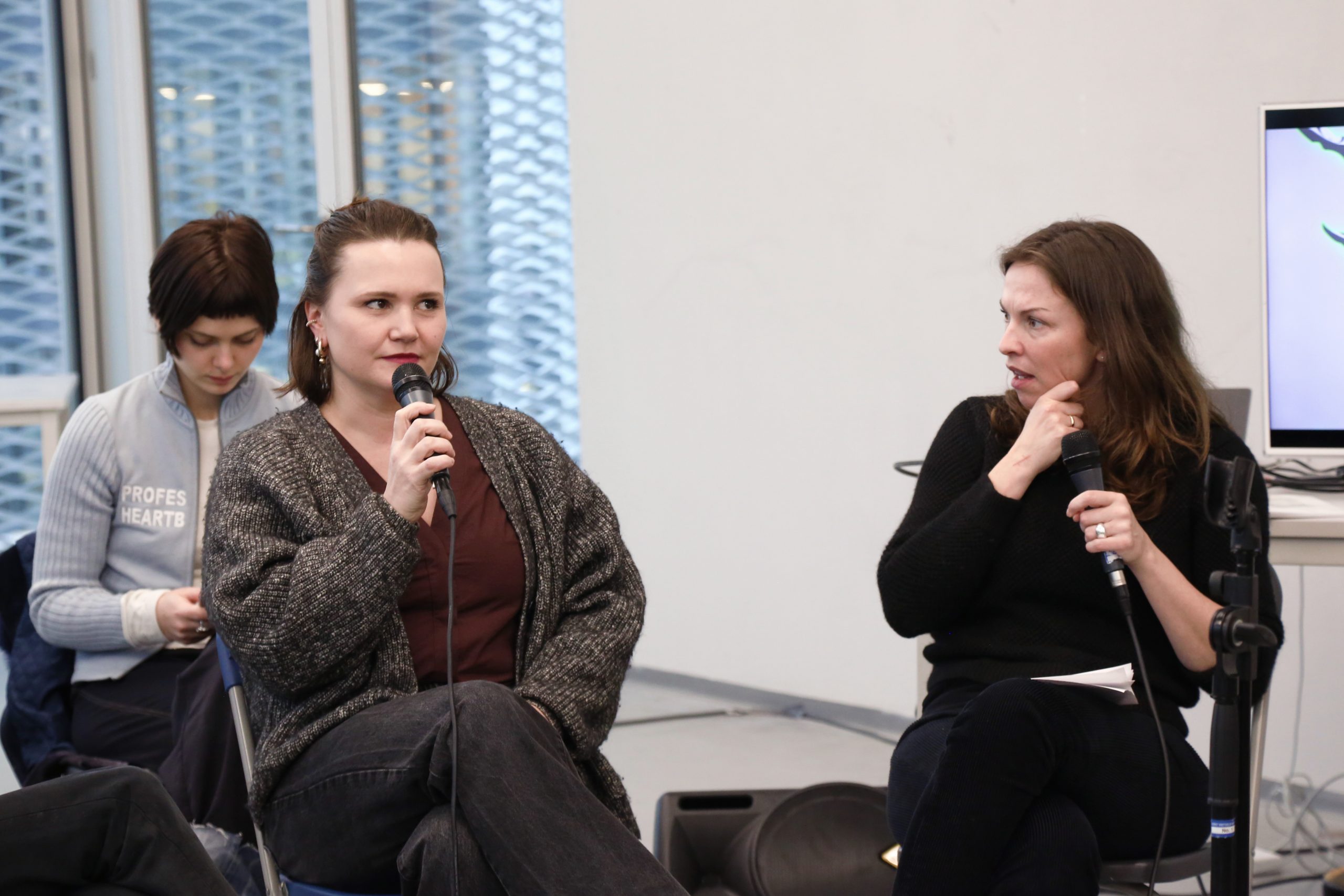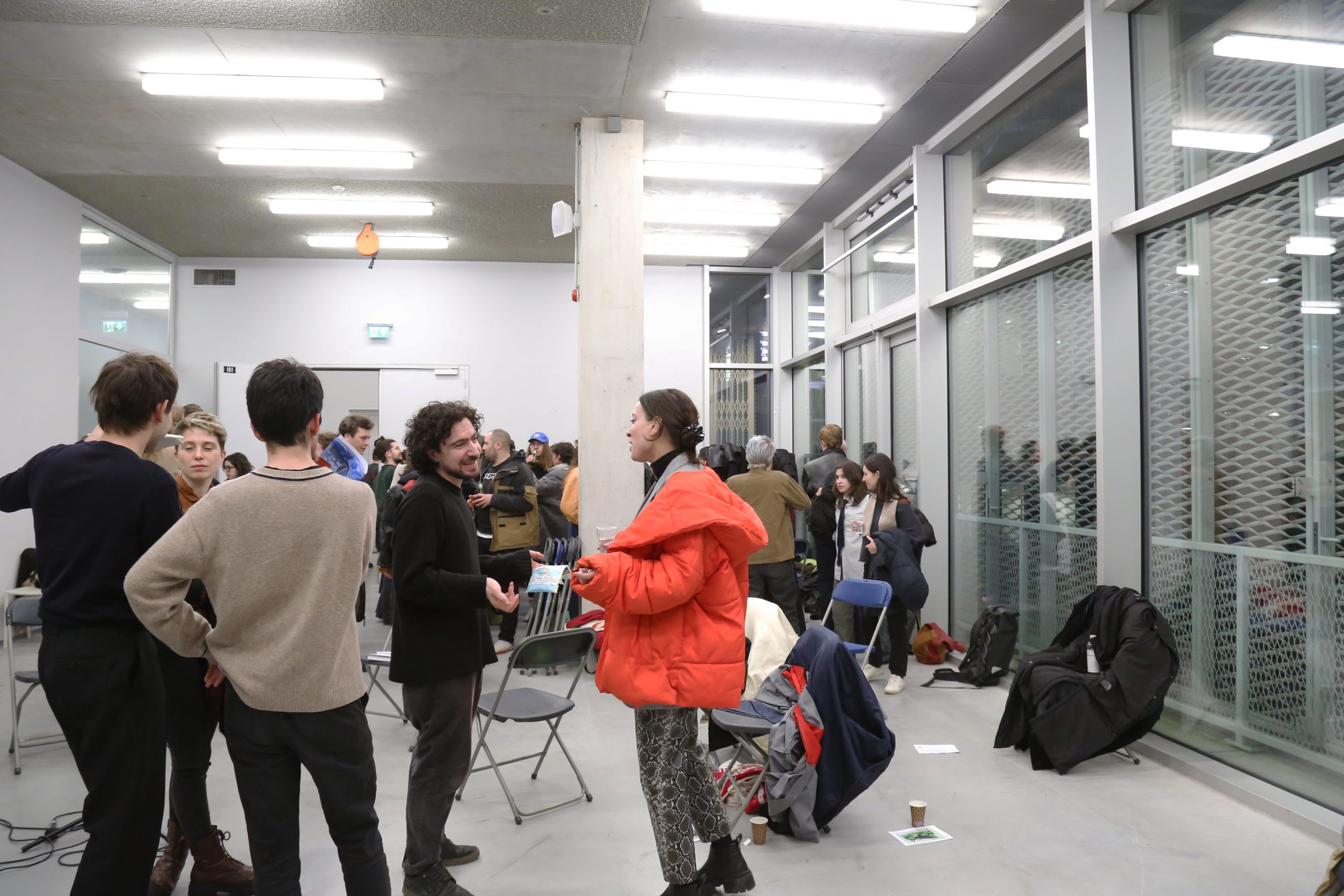Blurring the format
In research publications more often than not, media production—be it audiovisual or any other form of artistic practice that isn’t writing—is still seen as somehow inferior; mere support material. A figure that accompanies the text, the main act, and would fail to be considered as a form of research by itself. Producing, distributing, and consuming media is not about illustrating already existing research or knowledge, but about doing things: working with media is actively doing research. In this sense, we should try and facilitate both tools and means for practitioners of this practice-based research, currently not or at least underrepresented in the publishing industries. To put it concisely: what is the role of publishing within practice-based research?
Expanded publishing, or expanded outputs as we define it, is the research lens that tries to solve this question by going beyond both traditional and artistic publishing practices. What is interesting to us is being able to look at ‘non-publishing’ practices, as publishing. Within the arts publishing is usually something that follows at the end of a process—or not at all—. It is something site-specific that circulates through live events and experiences in an attempt to keep what Benjamin would call the ‘artistic aura’ intact. However, there is a need to add some publishing elements already throughout the whole artistic process, especially when it comes to the new field of (artistic) research where traditional publishing and artistic publishing meet.
With THE VOID (a new research project set up by INC), over the past year, there has been tons of research and experimentation with audio-visual production and distribution. To do so, THE VOID team decided to approach the topic by starting the production of their content, in collaboration with artists. Now, after the first year of experimentation, we are trying to collect different ideas and questions that arose during this time of research. To properly set up a research agenda, we believed it is crucial to engage in conversations with other artists, researchers, and experts from within the field. That was the backdrop for the “Blurring the Format” event that found place on the 7th of February at the Gerrit Rietveld Academie.
When setting up this event, THE VOID aimed to gather and discuss the role of expanded publishing and its possible trajectories. How can publishing be expanded to non-text-based output as well? What does it mean open source publishing audiovisual projects? How can artistic researchers share transparent workflows without diminishing their labor? How we can make the language of practice-based research more understandable? How do we make a wide variety of conversations happen in audio-visual language? We discussed these and many other topics together with a group of experts from various fields such as art research, education, publishing, archiving, and (new) media industries.
The program consisted of two parts. First, we began with a presentation of the multimedia research done by the artist collective timeis.capital, which is creating a repository for self-organized initiatives in the art world through different multimedia means such as video, audio, and 3D footage. This research was published in the form of a film, which can be accessed here. The presentation of this film was the starting point for a broader discussion on the role of publishing and archiving for practice-based research. More information and previous works by timeis.capital are to be found on their website.
The debate that followed was moderated by Patricia De Vries, research professor at Art & Public Space and the lectorate of the Gerrit Rietveld Academie. Patricia’s work is embedded in artistic practices that deal with stories about emerging technology and the urban environment. Previously, she worked as an assistant professor of philosophy at Maastricht University and as a researcher at the Institute of Network Cultures in Amsterdam. She received her Ph.D. from Erasmus University in Rotterdam.
The debate participants included Carlo de Gaetano (Visual Methodologies Collective), Mariana Fernandez (Arias), Roman Tkachenko and Iskra Vukšić (timeis.capital), Pien Visser (Freelancer at a.o IDFA DocLab), Tommaso Campagna and Jordi Viader Guerrero (THE VOID), Malin Dittmann (Archive Sites) and, Kris Petrasova and Kiki Lennaerts (Sound & Vision).
A key feature of this event was to come together and engage in conversations. Rather than taking the position of experts with answers, our participants raised questions and shared curiosities. The participants brought to the table insights from the respective organizations they represent and their own, individual practices. To establish an open atmosphere, we used a “fishbowl” set-up where all the participants were positioned circularly. An empty chair in the center was placed for anyone that wished to share their thoughts and questions during the event. Following the more formal discussion, all the participants were encouraged to stick around and continue the talk over drinks and snacks. The space also hosted an exhibition of the work of timeis.capital, that visitors could freely interact with.
Presentation
Carlo de Gaetano (Visual Methodologies Collective)
Carlo de Gaetano is a designer and researcher at the Visual Methodologies Collective, where he specializes in data visualization for social research. He is currently developing an artistic research project on climate imaginaries, exploring audio-visual collections on nature from archives and online spaces. He’s also conducting experiments in (machine) learning from climate fiction in literature, cinema, and social media, with a special interest in the relationship between AI and imagination. He collaborates as an information designer with the Digital Methods Initiative (UvA), where he contributed to studies on climate visual vernaculars, climate movements, and fake news. Carlo designs teaching materials for digital design students and other educational programs inside and outside HvA, which include how to collect, explore and visualize collections of digital images, the ‘spreadsheet etiquette’ of the visual researcher, and how to use data visualization software and computer vision software in the study of social issues. His projects include:
- It happened tomorrow: a speculative landscaping workshop. [1 & 2]
- Kijk in de zeespiegel: What will your environment look like in the future?
Mariana Fernandez (Arias, Visual Methodologies Collective)
Mariana Fernandez is an artist-writer-researcher and the current editor and communications person at ARIAS. Her practice intersects the fields of architecture, linguistics and technology. She is fascinated by fictional archives, piles of stuff, hedges, memes, guinea pigs, and PowerPoints. In her book “Dear Machines”, she explores the potential of natural language processors as companions and co-writers, wondering about authorship, notions of digital kinship, and her own relationship to machines.
Currently, she is focused on researching A.I., language, and our intimate and sometimes problematic relationship with machines. She is part of the Sandberg AI research group, Visual Methodologies at the HvA, founder of the feminist research collective “COVEN, and she leads the A.I. thematic line at ARIAS Amsterdam. In her spare time, she plots revolutions, plays tennis, and makes critical commentary about reality tv, which she loves. She is an alumni of the Gerrit Rietveld Academie and the Sandberg Institute. Send her memes @iamarianafernandez
Roman Tkachenko and Iskra Vukšić (timeis.capital)
Timeis.capital is an online platform for audio-visual research on self-organization. It consists of interviews with people who self-organize and the 3D scans of the spaces from which they do this — project spaces, squats, and living rooms. Its aim is to collect practice-based knowledge and strategies that are produced in the ephemeral landscape of artist-run initiatives — in order to strengthen the non-institutional art world and generate new energy for self-organization. Timeis.capital consists of a fluid collective of artists and friends.
Pien Visser (IDFA DocLab)
Pien Visser is a freelancer in project management and marketing/PR, part of the arts and culture industry since 2014, with a background in Cultural Analysis (Uva). Currently at a.o. performance collective Urland and IDFA DocLab. The latter is IDFA’s new media program, exploring the art of interactive and immersive non-fiction, where I work specifically on the Research & Development program. Here my projects include The R&D Summit and expert meetings, the ONX + DocLab MoCap Stage, and MIT Open DocLab’s audience research.
Malin Dittmann (Archive Sites)
Malin Dittmann is a multidisciplinary designer currently based in Rotterdam. Her design practice involves design and research on materials for interior, product, art, and fashion. She investigates contemporary culture to create unconventional concepts and material innovations for various fields. She has previously worked as an assistant for international affairs at the Royal Academy of Arts Den Haag (2019–2022) and as a Textile Instructor at the Hogeschool for Kunsten Utrecht (2022). Since 2022 she is part of Archive, a publishing house and art organization based in Berlin, Milan, and Dakar, for which she coordinates publications and Archive’s continuous research stream Publishing Practices. Read more about Archive here: [1, 2 & 3]
Kris Petrasova and Kiki Lennaerts (Sound & Vision)
Kiki Lennaerts is an advisor in new media preservation at the Netherlands Institute for Sound & Vision, focusing on interactive and emerging materials.
Kr Petrasova works at the Netherlands Institute for Sound & Vision as project lead for digital heritage and public media, focusing on arts education and (creative) re-use of digital audiovisual heritage.
Urgencies in expanded publishing
There were many urgent matters brought up during this event that lend themself to further investigation. All participants shared the desire to claim the space for our various research projects in landscapes that feel constraining on alternative methods and publishing practices. Although the discussion touched on a variety of important and connected ideas, some matters that stand out were: the issue of copyright, overcoming medium specificity, and managing labor-intensive publishing.
The issue of copyright
Copyright regimes restrict us to “look, but not touch”, to treat digital artifacts with more or less the same delicacy as the most fragile of ancient antiquities. Critics of the copyright system would argue that this is a wasted potential, as it both limits the creative potential of re-usage and unfairly imposes proprietary restrictions on what is essentially already a reproduced work (as in the case of digitized film). Archives with absolute copyright regimes are then accessible, but not all accessible, as stated by Kris Petrasova. Together with colleague Kiki Lennaerts from Sound & Vision, she reminded us of the urgent challenge of copyright restrictions in cultural heritage institutions. Sound & Vision is actively building interactive archives, meaning an archive that is not just for storage but allows the reuse and recycling of materials. Their practice entails the expansion of copyright knowledge and building tools for increasing open access.
The copyright issues also hold relevance for other participants who had been in the situation of withholding or discontinuing their work due to concerns of copyright claims and the tediousness of applying for licenses for even the smallest bit of footage. Although copyright licenses claim to protect artistic works, the question of whose interests are being protected is not always clear. The distinctions between reproduction and artistic re-usage are blurry, and there must be space for negotiations beyond the commercial copyright regimes.
Jordi Viader Guerrero brought to the table the idea of constructing new cultural platforms where sharing is the norm and interactions between older and new works are encouraged, rather than shunned and financially penalized. As noted by Kris Petrasova: ”how commercial can you make cultural heritage, which was already paid for with public money?”
Overcoming medium specificity
“Publishing should not be the endpoint or this final moment where the thing or the piece or the object is already done. But only one more point within a larger process”, as said by Jordi. For a lot of the work done in artistic research, the idea of medium specificities is interesting. What this refers to is how the qualities of a particular format of publishing exist in a dialectic relationship with the content. Form and idea align, or otherwise complement each other. Although medium specificity gives a certain safety to the process of publishing, wherein specific types of content “should” by tradition be published in specific formats, the ambitions of this project, and the projects of several of the participants, is to overcome the traditions of medium specificity. Instead of following what is traditional, expanded publishing implies that material can be released in forms that extend the very definition of publishing.
Carlo de Gaetano and Mariana Fernandez shared their experience of publishing artistic research in the form of visual responses. Rather than treating publishing as a way to “conclude” the happening of an event, publishing can also be seen as the immediate response to the event. As well as the starting point of a dialogue in and of itself. Pien Visser noted that projects also grow alongside audience inputs. This effectively changes the medium from static to processual. Performance can become book, book can become podcast, podcast can become discussions between friends. When working with interactive projects the endpoint is not, and should not be, defined from the beginning. Rather, spontaneity can direct the work to new avenues beyond traditional publishing. “It grows because everything that happens along the way, makes it change”, as Pien stated.
Furthermore, Iskra Vukšić brought up the idea that we need not always be making new avenues for publishing, although it is nice when it occurs, but rather experiment with what already is out there. The term expanded publishing alludes to extending that which already exists, to use and share the resources we have. These projects do not have to evolve in their own innovation bubbles but can align themselves with existing movements and ideas.
On the note of increased media circularity, and exploring new avenues, THE VOID is working on a strategic zine concept. For those curious, listen here:
Managing labor-intensive publishing
The goal should not just be to publish a work in as many formats as possible, on as many platforms as possible. Instead, we should consider what the format is doing for the subject matter and be open to challenging the status quo. As noted by Malin Dittmann “to understand how to make an artwork circulate in an effective way, in an outreaching way that is fitting to the artwork”.
In this sense, we must reach compromises between a perfect, polished publishing process, and what is possible with the resources at hand. Exhaustion and burnout are familiar topics to those working in research, publishing, and art. It is no secret that publishing something involves a high level of stress for those doing the labor. Stuck in between always looming deadlines, unsustainable workloads, and limited finances, actors in the field have plenty of stress which is not always considered by external collaborators. To ensure not just the advancement of expanded publishing as an idea in itself, but also the sustainability of expanded publishing is important. We are reminded that systems of care are of urgent need in our work, and going forward this builds the fundament of our practice.
Photography by: Ray (Anastasia) Dolitsay
Report written by: Mathilde Hjelle
Link List
Visual Methodologies Collective
Infinite Scroller (By Jordi Viader Guerrero)
Project Partners
Timeis.capital
Supported by the Centre of Expertise for Creative Innovation and the Amsterdam University of Applied Sciences, Faculty of Digital Media and Creative Industries.
